Although most enthusiasts think of either a mid- or full-tower case when deciding on their next build, smaller enclosures have come quite a long way in the past decade. One of my earliest towers was a nice mini from Antec, and although it looked decent enough, it was a nightmare to work with. SilverStone seems to have found a fairly nice balance of size and enthusiast-friendly features with the new PS07. More importantly, however, is that Micro ATX motherboards have come far beyond what was available back when I started building PCs. While still short of a full ATX motherboard, Micro ATX boards have to give up very little in terms of enthusiast features, and in fact hardly even cost more. Most of the losses come in the form of things like copious power phases and boatloads of extra integrated peripheral chips. As more and more features start getting integrated right into the chipset, this drawback becomes considerably less of a nuisance. If the goal of your build is to be a home theater PC that sits in your living room, like me, then you’re giving up pretty much nothing for the space saved vs a mid size tower and full ATX board, but saving cost and keeping features that would be lost by moving to something smaller like Mini-ITX.
The SilverStone PS07 comes in either black or white. Although I would have preferred black, I must admit I find the stark Stormtrooper-esque white of the review case to be quite appealing. After some fumbling and exploring, the glossy shine seems surprisingly resistant to unsightly gross fingerprint smudges, which is definitely a nice perk considering the front panel is one of the offending glossy plastic pieces, and that’s where you’re hitting things like power buttons. Further inspection reveals that the coating on this plastic is actually not really glossy, but in fact has a slight brushed look. Considering metal can be expensive, and many cheap enclosures/laptops/assorted peripherals gravitate towards cheaper plastic…I can’t help but hope others at least take note of Silverstone’s achievement here, which is dubbed “Plastic with Aluminum Accent”.
Specifications
- 2x 5.25″ drive bays
- 1x 3.5″ drive bay
- Internal: 5x 3.5″ drive bays and 1x 2.5″ drive bay
- Front fans: 2 x 120mm fan, 950rpm, 18dBA (PS07B black only)
- Front fans: 2 x 120mm fan, 1200rpm, 18dBA (PS07W white only)
- Rear fan: 1 x 120mm fan slot (fan not included)
- Internal expansion slots: 4
- USB 3.0 x 2 (backward compatible with USB 2.0) front panel
- Audio x 1 front panel
- MIC x 1 front panel
- PSU: Standard PS2(ATX) optional, max length 180mm*
- Max expansion card length: 13.5″
- Max CPU cooler height: 165mm
- Dimensions: 210mm(W) x 374mm(H) x 400mm(D)
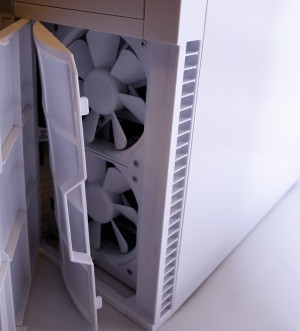 Features
Features
The front panel is rather unassuming, with a clear space for two 5.25″ accessories, and a simple array of power/reset buttons, power/drive LEDs, two USB 3.0 ports, and audio out/mic in. The dash of vertical lines thrown in adds a bit of a nice touch to the otherwise plain front. The right side of the front contains grills for the intake of air, along with a door that opens to reveal the dual 120mm intake fans, along with the easily removable dust filter for them. The left side contains more grills, and two slightly mysterious buttons near the top. Pressing these reveals easily removable covers for the two 5.25″ drive bays.
Moving from the uninteresting sides to the back, the first thing that jumps out is the top mounted power supply slot, which explains the dust filter on the top fan mount. Most top mounted fan mounts are for exhaust these days, considering the craze for bottom-mounted power supplies. With this configuration, it appears as though the PSU is meant to be isolated from the system, taking in and exhausting its own air—which isn’t necessarily a bad thing. The obvious flaw is that without any exhaust up top pulling air from the case, the air would simply flow in the front and go straight across the case to the back, where it would vent. However, with the case being so short, and two 120mm spinners stacked vertically in front, the fans extends up quite high into the case, and only the 5.25″ bays will be snubbed for air flow in that configuration.
Speaking of the top fan mount, it has a nicely magnetic approach to staying in place, which gives it a touch of class. The case does not ship with a fan for the back mount, so it’s relying on positive pressure to keep the air flowing—but with the amount of intake it has, that seems like a perfectly reasonable idea, and of course adding a 120mm yourself is not particularly expensive.
The build
Those of you more observant than I, or those who simply spent more time looking at the picture, may notice the configuration of the back of the case to be a bit…off:
I noted the presence of four removable, grilled expansion slots, along with a myriad of other grilled surfaces, further indication of the case’s preference for positive pressure to maintain good air flow. Of course we also have the four handy thumb screws for removing the sides of the case, and a couple of real ones on the top panel, for what I hope is in rare need of removal, otherwise the exclusion of thumb screws for those would be…odd.
A quick look at the bottom reveals four rubber feet, and that seems to be where the normal part ends. Also on the bottom is an odd looking little plastic piece with a screw, surrounded by other screws (presumably mounted in place on the inside of the case), and an arrangement of other screws near the front. Four screws in place, indicating something is bolted to it from the inside, and four empty screw holes…hmmmmm…interesting. We shall see.
Here is where it got odd for me. I opened up the typical left side of the case (if looking at it from the front), and behold my surprise when I see…the back of the motherboard tray. Now, there is a reason that the motherboard trays are always on that side…think about the layout of a motherboard, and where the port cluster is. It’s always on the top left, so there’s no other way to get it pointing out the back of the PC unless it’s against that side. You can’t just flip it unless…dun dun dunnn! I tossed aside the piece of the case and turned it to look at the back again. This time my dull, oblivious brain processed what it was seeing. The port cluster was on the bottom, which means the motherboard has to be against the opposite side of the case as normal, and upside-down. Well…this should be fun! I haven’t gotten to tinker around with any of these newfangled upside-down layouts yet. Let’s see what all the fuss is about.
So as I open the correct side this time, I’m greeted with a slightly more normal sight, although having not worked with a Micro-ATX case in over a decade, and no SilverStone case ever, the design was quite new to me. For those of you familiar with small-ish SilverStone cases, the design is clearly reminiscent of their past designs. There is a rail system at the top for the PSU and 5.25″ bays, two slightly odd segmented hard drive bays, and a motherboard tray with a generous CPU cutout. The hard drive bays are a bit towards the front from this angle, leaving space behind them. Although I’ve never really encountered this before, for a case this small, that seems like a perfectly reasonable idea for stuffing cables or part of the motherboard behind.
The worst thing about cases this size is stuffing things into it, by far. Since cases have come a long way, I figured I’d go ahead and take apart as much as I could before assembly. Like a champ, the PS07 complied happily. Two quick screws on the top portion of the hard drive cage, and off it comes. It even has a handy little trough for storing the screws. Four quick screws from the bottom of the case, and off comes the bottom portion of the hard drive cage as well. Although the case may be slightly lacking in tool-less pieces, so far, things continue to still be relatively painless. For the motherboard tray, the screws were a tad hard to spot. There’s one on the back of the actual case, one on the tray side on top, and one on the tray side on bottom. The bottom one has a hole cut out to make room for a screwdriver, but my ratchet screwdriver didn’t fit through. It’s a small annoyance, but it doesn’t seem like it would be too hard to avoid. Now we have disassembled all we need—or so I thought.
As it turns out, the top of the case DOES need to be removed for putting in the power supply, as there is a little ledge on the bottom for supporting it, and it doesn’t fit in from the inside. While this does make sense for the support and ease of construction on the PSU bay…it is oddly difficult to remove the top of the case. Aside from the back two screws which are oddly NOT thumbscrews, there are also two tiny screws near the top of the rail system on the inside of the case on each side, which are too small for a standard Phillips screwdriver head. Weird, and annoying, but at least it’s only required for the PSU, and not the front 5.25″ bays, as those are front-mounted. If I had read the manual first, I would have seen that such information is available, and also discovered what the empty screw holes on the bottom of the case were for: the only actual 2.5″ drive mount. Since I was using an SSD for this home theater PC build, I was glad that it did at least come with one, although the exclusion of brackets for a second feels a tad cheap.
To be fair, the case came with a reasonable number of nifty gadgets considering it’s a somewhat budget model: A USB 3.0 to 2.0 adapter for the front plate, a 5.25″ to 3.5″ pair of brackets and a matching plate for the front of the case, and some cable ties.
The mounts for the motherboard screws are built right into the plate, which is a feature that I found quite nice. It only comes with two extras for the holes that can actually vary based on motherboard configuration, and I only needed one of them. I plopped in my Z77 micro-ATX mobo and a fancy new dual-core Ivy Bridge CPU. There’s only about a half inch of space behind the motherboard tray, so a modular power supply would make routing a dream, and thus is recommended. On the bright side, none of the wires in my non-modular PSU had problems reaching their destinations using the cable routing locations, due to the shortness of the case. Things like the ATX 12V can often have problems reaching that way behind the tray for even simple mid size towers.
This build I was putting together was designed to sit in the living room and stream media through the network, and I already have a Blu-ray player, so it was a quite a simple end result. Just a single, small SSD for storage, and no other drives or anything in any bays. The result is very clean, and the airflow will be fantastic even without a back-mounted fan. After assembling everything and looking at it, that odd plastic piece on the bottom becomes very obvious to me—it’s a support for large CPU heatsinks. Particularly if the case is going to be in transit, having a support for movement can be extremely helpful, even as just a reassurance to not imagining the motherboard warping under the pressure.
I can’t help but highly recommend this case if you can make use of the perks. It is reasonably small and light, has reasonable space inside for most standard builds, and can be taken completely apart to make the build process very smooth. It has a few drawbacks, but they are honestly fairly nit-picky. There really could stand to be more space behind the motherboard trays for people with either non-modular power supplies, or those utilizing most of the cables for one. I know the purpose is to be small…but an extra half inch of width would totally be worth it. Very few parts of the build are actually tool-less as well, and in one case a small Phillips is required. Although nerds like me keep those around…it’s just weird to require that to mess with the power supply. The bottom line is if you don’t have a particularly overloaded PC build, and you can get away with a Micro-ATX motherboard, this is a fairly cheap, excellent case. Also I really dig the white.
The SilverStone PS07 is currently available at Newegg for $78.99 in black. The white version is a bit more rare, and can be found for $83.99 on Amazon.
Update:
We heard back from SilverStone regarding a couple of points in this review. Here is the response from SilverStone:
“In the introduction Matt briefly talked about the front panel in which we dubbed, “plastic with aluminum accent.” That accent part on the left side of the front panel where the buttons reside is an actual aluminum part. While the rest of the front door/panel is indeed plastic, the surface has that brushed aluminum look.”
“In the conclusion, Matt also talked about PS07 needing extra room behind the motherboard tray for non-modular power supplies that seems to be unfounded. We had specifically designed the PSU mount to be offset in the case so there is extra space for cable storage from a non-modular PSU. This is mentioned in the PS07 manual.”
We always appreciate and publish direct feedback from the companies we cover. Thank you for the response, SilverStone!


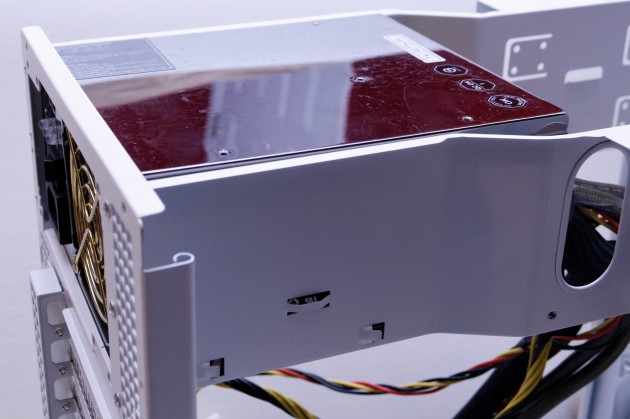
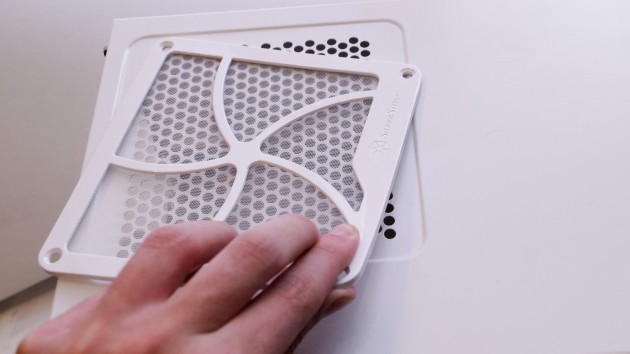
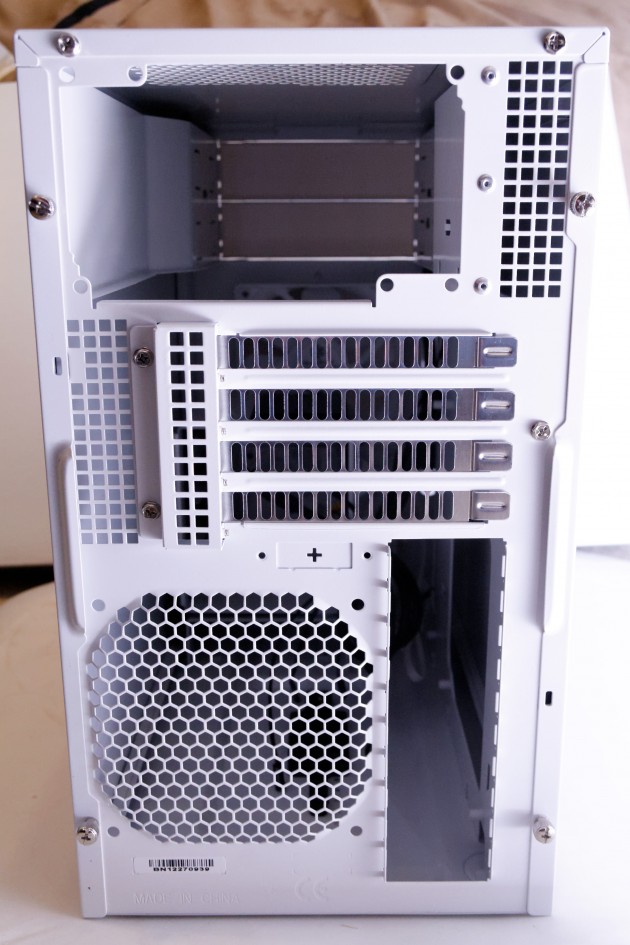
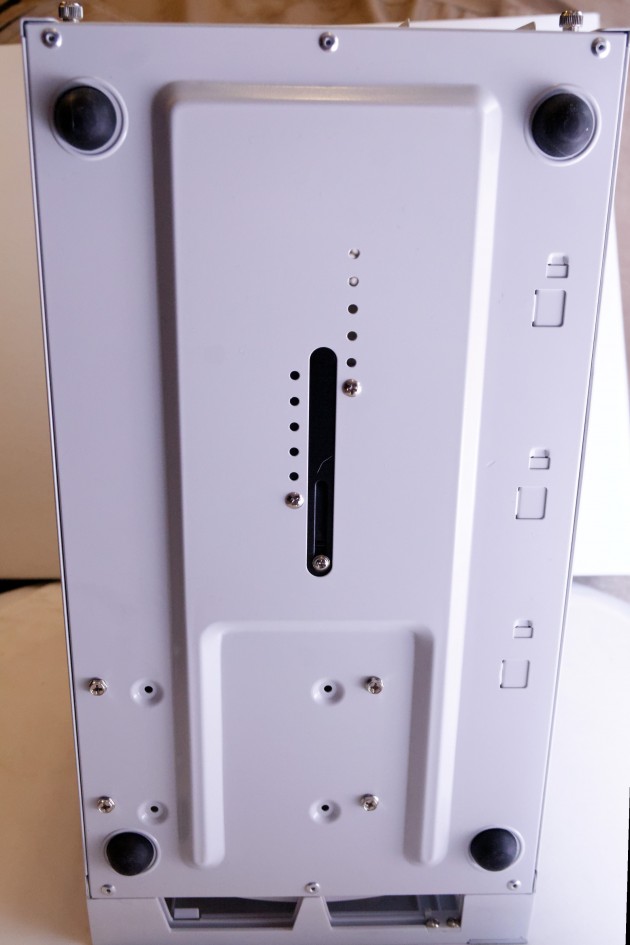
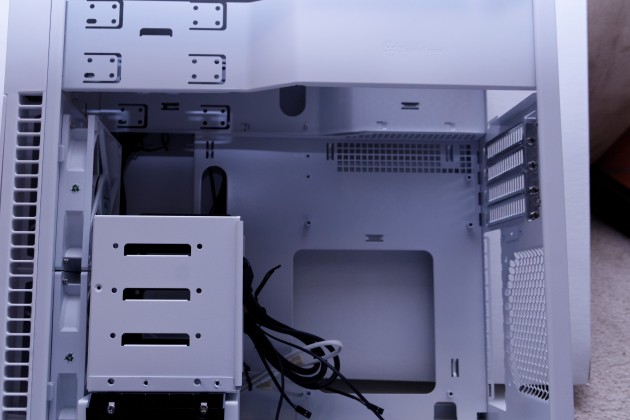
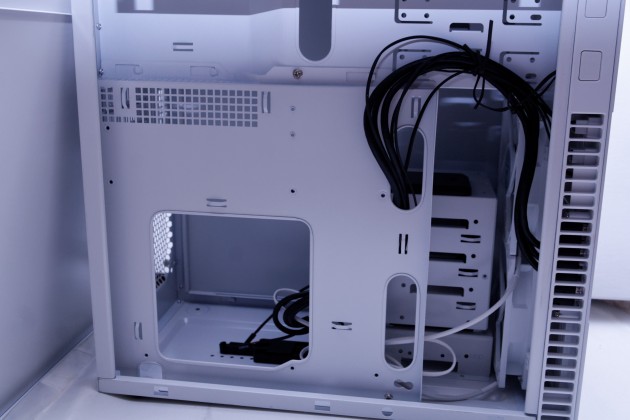
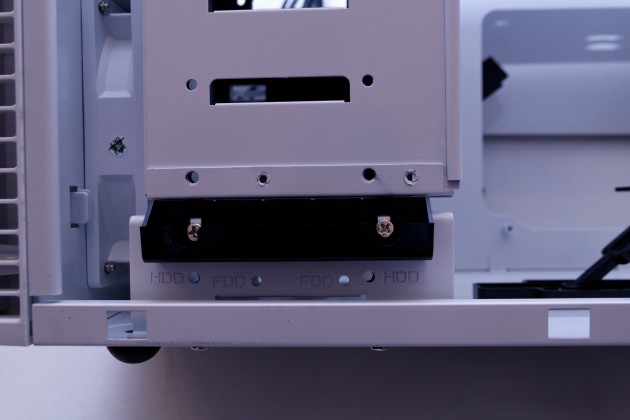
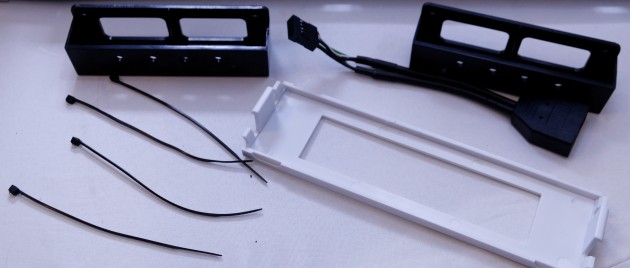

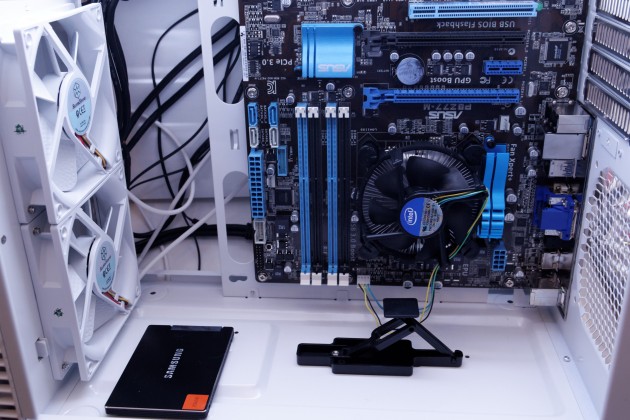








 Articles RSS
Articles RSS